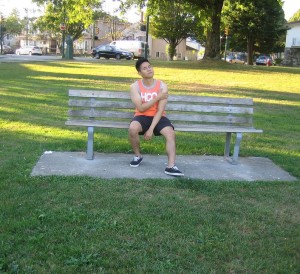Children are susceptible to hives or urticaria. Hives occur as a reaction to substances such as latex, food, insect bites and medications. Hives are not severe and eventually heal within a few days, but can become chronic and last for weeks or even longer.
This form of rash is described as red, raised areas of the skin that are itchy. The size ranges from 1 mm to several centimeters in diameter and individual bumps can merge into a large patch. Hives can develop when the body release histamine from heat, allergy, infections, changes in temperature and anxiety.
Symptoms of hives in children
- Hives develop on one area of the body due to direct skin contact with pollen, food, plants, fur and saliva of animals.
- Hives that develops all over the body can be a reaction to a viral infection or reaction to drug, food and insect bites
Causes

- Medications such as penicillin or allergy shots
- Foods such as shellfish, milk, nuts and fruits can cause hives that eventually disappears within 6 hours after eating.
- Anxiety and stress
- Bites and stings from insects such as mosquitoes and bees
- Exposure to pollen from flowering plants
- Direct contact with animals
- Bacterial infections which includes urinary tract infections as well as strep throat
- Viral infections such as common cold, infectious mononucleosis and hepatitis
- Direct contact with chemicals including laundry detergents or scented soaps
- Exposure to the sun or extreme temperatures
Treatment
- If due to certain underlying conditions, treat the condition to lessen the welts and itching.
- Wash the affected area using soap and water to prevent the condition from getting worse due to the lingering allergen on the skin.
- Take a cool bath to relieve the irritated skin and lessen the inflammation. Another alternative is adding colloidal oatmeal to relieve the irritation on skin. In a bathtub, sprinkle some uncooked oatmeal or colloidal oatmeal mix until completely dissolved. Let the child soak in the tub for at least 10-15 minutes.
- Apply calamine lotion or an anti-itch cream to lessen the hives, inflammation and itchiness. Dab an over-the-counter anti-itch or hydrocortisone 1% cream to reduce the itchiness at least once every day after taking a bath.
- Apply a cold compress to lessen the inflammation and itchiness. This method works by making the skin cool and constricting the flow of blood in the area. Apply an ice pack on the affected area intermittently for at least 10-15 minutes.
- Discourage the child from scratching the affected area to prevent spreading the allergen and aggravating the condition.
- Let the child wear loose, smooth-textured clothing such as those made out of cotton to prevent excess sweating and minimize scratching which can make the condition worse.
- Provide the child with the prescribed antihistamine such as cetirizine or diphenhydramine.
FACT CHECK
https://en.wikipedia.org/wiki/Hives
https://www.medicinenet.com/hives/article.htm
https://www.webmd.com/skin-problems-and-treatments/guide/hives-urticaria-angioedema#1
